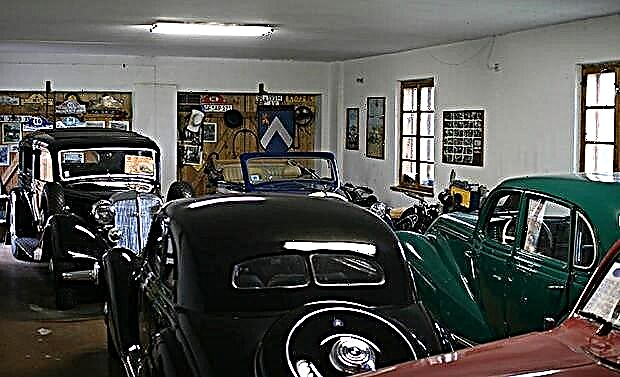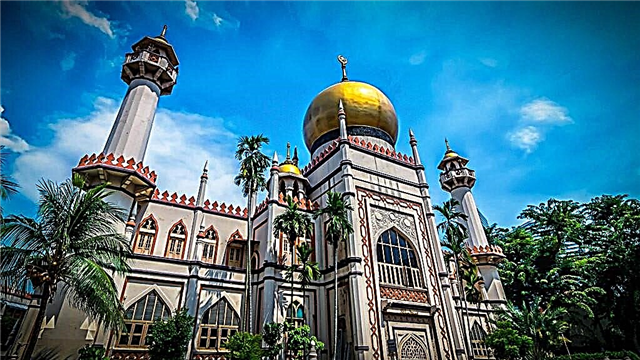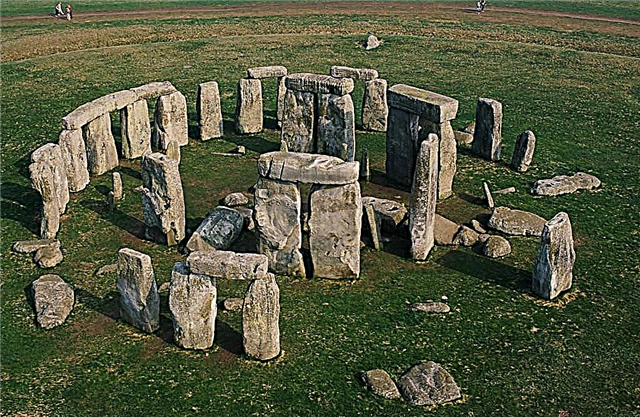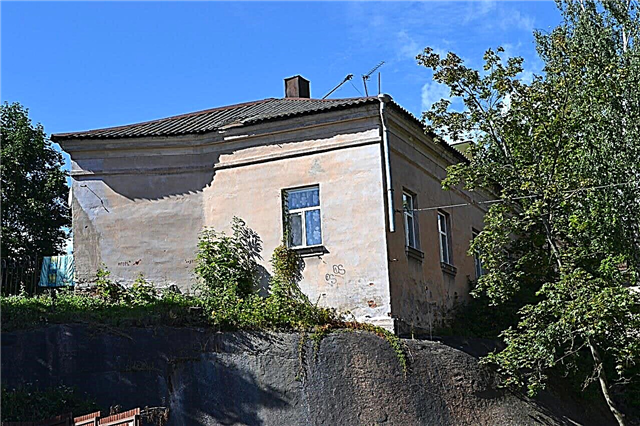Throughout the history of its existence, Vyborg was a part of different states. Moreover, all benefits were retained for residents. The peasants were not serfs, the townspeople professed Catholicism and Lutheranism. The city resembles a layer cake: architecture and cultural traditions are so intricately intertwined. Tourists note: in the historical part, it feels like a walk takes place in the Czech Republic, Poland or Germany. The city is compact, all interesting places are located close to each other. The sights of Vyborg are easy to get around on foot.
Vyborg castle

At the end of the 13th century, the Swedes captured the fortification of the Korela tribe, which was located on the island. To secure the crusaders, they erected an outpost. The walls of the fortress in some places were 2 m thick. And in the center there was a watchtower. The structure turned out to be impregnable: the coast of the island is steep and rocky, and the water is a natural barrier. The crusaders owned the castle until the 18th century.
At first, the castle performed exclusively military functions: little thought was given to the comfort of the garrison. But starting from the 15th century, the governors of the king of Sweden built new structures, changed the interiors. Today, the castle is an ideal destination for lovers of medieval Western architecture. Today, guests are invited not only to walk around the territory and admire the old buildings.
There are permanent and thematic exhibitions:
- history of the city during the period of 2 wars: Finnish and World War II
- amazing flora and fauna of the Karelian Isthmus
- underwater world of the Gulf of Finland
- Vyborg as part of the Kingdom of Sweden and Finland
There are master classes for children and adults. Guests will try their hand at traditional Karelian crafts. A children's museum center has been created for young history buffs. Here you can celebrate your birthday, listen to a fascinating story, just play. Every year visitors become spectators of a real knightly tournament. The spectacle is interesting for tourists of all ages.
The complex is located on the Castle Island.
St Olaf's tower

This is the only watchtower in Russia built according to Western European rules. But its original appearance can only be established using archaeological finds. The base rests on granite slabs. The walls in some places are 5 m thick. The tower was absolutely not suitable for the squads of the Novgorod Republic. And they named the donjon after King Olaf, who exterminated the pagans, actively spreading Christianity.
For this, the monarch was canonized after death. But over time, the tower was considered obsolete: its garrison could not repel artillery attacks; in the 16th century, reconstruction was carried out. Donjon acquired additional floors. And during the Swedish-Russian war, the tower was badly damaged. Then the wooden floors burned down. However, in the 19th century, the building was restored.
But the original part is only the lower granite tiers. The staircase, along which the guests go upstairs, was erected at the very end of the 19th century. Today tourists can climb to the observation deck. But currently there are restrictions on the size of the group. No excursion service is provided.
St. Olaf's Tower is located on Castle Island.
The Red Square

Today it is the main city square, where parades, shows and official events take place. But initially it was located outside the city limits and was called the Red Well Square. The water in the well was indeed red at times: mass executions were taking place nearby. The flowing blood was the cause of such a cataclysm. Subsequently, the city was upset: the square changed its appearance. Unfortunately, the first wooden buildings only survived on the plans.
But the Pharmacy House (with some changes) has been preserved, and the pharmacy is not still located there. At the end of the 19th century, a club was built on the square, designed by Blomkvist. Various organizations now work in the building. At the beginning of the twentieth century, the square was decorated with Moskvin's apartment building and the Otso joint-stock company. In 1932, the house of the Vyborg rural community was erected.
Unfortunately, unique buildings are in need of restoration, and some of them are in need of reconstruction. But you can imagine what the square looked like at the turn of the 19th century. Red Square is located at the intersection of Ushakov and Severnaya Streets, Leninsky and Suvorovsky Avenues.
Sculpture Garden

In 1988, the city hosted a symposium of Russian artists. We chose a place where there is a deposit of natural stone - gray granite - mined in a local quarry. But after the end of the event, all participants were obliged to leave their works on the territory of the city. This is how the unusual Sculpture Garden appeared.
Today tourists can see compositions:
- Song
- Orpheus
- Boy with cat
- Rest by the sea and Ulitana
- Singing stone
- Wolf
- Builder
- Rest
- Kneeling
- Blacksmith
9 sculptures are located in one place: at the intersection of Kuibyshev, Vokzalnaya and Akulov streets and Leningradskoe highway. And the Boy with the Cat was moved to the embankment of the Big Bucket. The address of the Garden of Sculptures: Leningradsky Prospect, opposite building 1.
Viking Drakkars

In the city you can see unique ships - drakkars, on which the Vikings conquered the seas. These are long, narrow boats, with the stern and bow high up. The history of the exposition is unusual. In the 80s of the twentieth century, Rostotsky and Andersen filmed a film for which they needed the ships of brave seafarers. It was based on a ship discovered during excavations in Gokstad at the end of the 19th century.
At the shipyard in Petrozavodsk, 2 drakkars were built on the model. After filming ended, Rostotsky presented the ships to Vyborg. They were moored in front of the Druzhba Hotel. The townspeople and tourists fell in love with the unusual exposition; there are always many people around the drakkars. Over time, the boats turned black and dilapidated.
Therefore, in 2009, the city authorities instructed the local shipyard to make copies of old ships. The new ships are moored in the same place: opposite the Druzhba Hotel. And there are still many guests of the city and local residents, examining the unusual exposition. Drakkars are located on the waterfront of the city.
War Museum of the Karelian Isthmus

This is a private museum, which was organized by Bair Inricheev. The historian used his personal savings to acquire artifacts and create an exhibition. The center is located in the Military town № 205. The exhibition includes more than 2000 items of storage. Here you can see items discovered by search engines in the Leningrad Region. The center is popular not only among Russian tourists, but also among guests from near and far abroad.
The complex has permanent exhibitions:
- weapon
- women at war
- military leaflets of the Soviet-Finnish and World War II
- military diorama
The center is actively involved in social and educational work. Subbotniks are organized to maintain the structures of the Mannerheim Line. Trips are regularly made to the places of battles of the Soviet-Finnish and the Great Patriotic War. It is recommended to book in advance for field trips.
House of the merchant Buttengoff

This is an interesting building designed by Johan Blomkvist. The customer is the wealthy merchant Buttengoff. He wished to have a tenement house, but richly decorated. According to the merchant, this stimulated trade and attracted new customers. On the 1st floor there was a Buttengoff store, where visitors were offered to purchase foreign cigarettes and wines - everything that the merchant sold.
The location was chosen well: the building is located on the top of the Bell Mountain. And the house itself opens up to the eyes gradually, as people climb the Fortress Street. Today it is an ordinary residential building.But its architecture deserves attention: even in this quarter of old buildings, the building stands out and attracts the eyes of city guests.
Doi of the merchant Buttengoff is located along Krepostnaya street, 7.
East Vyborg fortifications

A stunning place loved by all residents and visited by tourists. The border of the historical part of the city and new buildings passes here. And from the hill, the entire historical center lies at a glance. The remains of the once impregnable forts and structures have survived to this day.
Here you can see:
- defensive ramparts
- curtains
- ditches
- redoubts
And the East Vyborg fortifications were built after the Horned Fortress became obsolete and ceased to protect the city from the east. The author of the project was Totleben, and the executor was the military engineer Kislyakov. The imperial treasury allocated a whole 1,000,000 rubles, but it took almost 10 years to wait for the completion of the construction. The fortifications were equipped with the latest technology: the garrison had the most modern weapons.
And the fortifications were built with dignity: they reliably closed Vyborg at all times. During the battles of the Civil War, the battle for the fortress stopped only after the ammunition depots were blown up. And the Finnish troops held out here impregnable until the very signing of the peace treaty. And those guests who are tired of exploring the fortifications can climb Battery Mountain and take a walk in the shady Kalinin park.
The fortifications are located in the Central microdistrict of the city on Battery Mountain.
House of the Merchant Guild of the Holy Spirit

Researchers consider the building to be the oldest of all urban ones. Presumably, it was built in the 14th century. And 200 years later, the building was bought by the Merchant Guild. The purpose of the house was usual: the basement was used as a warehouse, and on the first floor the merchants entered into contracts. The entrance to the second floor was from the street. Surprisingly, the building faces the street with an angle, not a facade. This is easy to explain: during the redevelopment initiated by Catherine 1, the streets of the city changed their direction.
The house itself is made of boulders, the construction turned out to be heavy. Over time, the building sank into rocky soil: the 1st floor became underground. But this only adds to the attractiveness of the building. The house is built soundly: in the entire history of its existence, 1 large-scale reconstruction was required. In the 20th century, a new brown tile roof was installed. Today, tourists willingly visit the souvenir shop, which is located in the building.
Address: st. Vyborgskaya, 8.
House on the cliff

This building stands on an ancient foundation on a rock. It was surrounded by the same old buildings, but in the 18th century they were all destroyed. Surprisingly, the hairdresser's house survived! And it has remained practically unchanged. Some local historians claim that the most famous barber received clients here. But architects dispute this opinion.
Their argument: there are no windows on the 1st floor, and this is typical of merchant buildings. It is not known which of the researchers is right, but the building is loved by tourists. All visitors tend to look at the house with a sharp turret. Today it houses a popular souvenir shop. Guests of the city willingly buy gifts for friends and relatives there.
Address: st. Running, 5.
Vyborg City Hall

This building has changed its appearance more than once during its existence. She appeared in the city in the first half of the 17th century. Then it housed city structures. It is noteworthy that a wine cellar was set up in the basement, which officials eagerly visited after meetings. During the shelling of the city by Russian troops in the 18th century, the town hall was badly destroyed.
The authorities decided to build a new building and use the old one as needed (after minor repairs). But at the end of the 19th century, the town hall was reconstructed. Blomkvist has been working on the project for over 20 years. The result impressed the townspeople: the house grew by 2 floors and acquired neo-Renaissance elements. It became possible to place the exposition of the historical and ethnographic museum in the building. But the story of the town hall did not end there.
During the Finnish campaign, she suffered again. And after the end of the Great Patriotic War, it was restored, an attic was added and turned into a residential apartment building. This appointment has survived to this day. At the end of the 20th century, the town hall was added to the list of historical heritage. A cozy town hall with a neat monument to Torgils Knutsson in front of it creates the illusion of the Czech Republic or Poland. Tourists take pictures with enthusiasm in this place.
Address: st. Krepostnaya, 2 (on the square of the Old Town Hall).
Round Tower

The troubled eastern neighbor forced the Swedish kings to constantly improve the fortifications of the eastern part of the city. In the middle of the 16th century, Gustav Vasa ordered to build a powerful defensive tower near the Animal Gate. A closed gallery of 2 walls ran from the gate to it. The tower is called Round, but its cross-section is oval.
The walls are 3-4 meters thick, and the largest diameter is 21 meters. A little later, the tower fully justified the hopes placed on it: Russian soldiers were unable to disarm its garrison. And during the shelling by the troops of Peter 1, the defensive structure was only slightly damaged by shells. After the capture of the city, the Russian emperor ordered to rename the tower to Petersburg.
But after the need for a tower for defense against enemies disappeared, they began to use it to keep detained sheep and goats that grazed in forbidden places. Here the animals were waiting for the owners to pay the fine and buy them back. There were times when the building was considered unassuming, unwieldy and ugly. The tower has been threatened with demolition several times. The architect Ulberg saved her.
He suggested converting the building into a trendy restaurant. The walls of the halls were painted with pictures on historical themes and provided with comments. The audience fell in love with this unusual establishment. Today the restaurant still welcomes guests. There is a bar on the first floor, banquets are held on the second, and the third one surprises visitors with unique paintings by Uno Ulberg.
Address: Market Square, 1.
Monument to Torgils Knutsson

Ville Walgren made the statue of the Swedish Marshal in 1887. But it was installed only in 1908. The Russian commandant of the city considered it unpatriotic to have a statue of an enemy of the state in the city. To resolve the issue, the personal intervention of Nicholas 2 was required. The misadventures of the sculpture continued. The Marshal stood in front of the Old Town Hall for 40 years, and then one of those in power came up with the idea to melt the statue.
She was removed from the pedestal and placed in the basement: to resolve the issue, approvals were required. This is what saved the marshal: he was forgotten for 45 years. The storage conditions turned out to be bearable: in 1993 it was restored and put in its original place - at the Old Town Hall. Today Torgilson Knutsson rises above the square: he can see everything from a high granite pedestal.
Address: Krepostnaya Street, 2 (on the Old Town Hall Square).
Annenskie fortifications

Annenkron is a system of defensive structures built to protect the north and northwest from Swedish troops. And since the work was carried out (mainly) during the reign of Anna Ioannovna, the fortification was named after the Empress. The entire system of fortifications has the form of a ladies' clasp, therefore it is also called Kron-Saint-Anna.
The fortifications turned out to be impressive: the thickness of the embankment and walls was 3 meters, the height reached 10, and the walls with bastions and curtains stretched for a whole kilometer. For construction, an untreated stone was used, connected with mortar. The fortress was completely autonomous: barracks, guard rooms were built here, shopkeepers, grain and food warehouses were located. If necessary, Annenkron would withstand a prolonged siege of enemies.
But it was not necessary to use for its intended purpose Cron-Saint-Anne. It is noteworthy that more than one generation of military engineers worked on the construction of Annenkron, including Abram Hannibal.In 1910, by order of Nicholas 2, a monument to the 200th anniversary of the capture of the city by the troops of Peter 1 was erected on the Annensky fortifications. But in 1918 the Finns dismantled it.
Then the Soviet authorities erected the monument again. Annenkron are the only fortifications of the city that have survived well to this day and have never been rebuilt. They are located on Tverdysh Island along Ostrovnaya Street.
Petrovskaya square

Buses arrive at Petrovskaya Square bringing Finnish tourists. And she herself was formed simultaneously with the construction of Annenkron. And this is not surprising: the fortifications were built for more than one year, the engineering troops needed to be stationed somewhere. That is why the headquarters, the seating yard and the barracks for the soldiers-builders were built.
The houses were originally made of wood, but after a few years they became stone. And the main building acquired 2 wings. In this form, St. Anne's Square reached its contemporaries.
The name has changed several times:
- St. Anne's square
- Whitefish cape area
- Petrovskaya (since 1945)
But the appearance of the square still changed: for the 300th anniversary of the city, the authorities renewed the cobblestone masonry, installed benches, and later an anchor appeared on the square. He was raised from the bottom of the Baltic Sea. The author of the improvement project is Oleg Likhovidov.
In the buildings that are located on the square, at different times were located the Russian school, the editorial offices of revolutionary newspapers, the RSDLP committee and the council of deputies. Today, the political life of the city bypasses it: tourists love to walk in this historical place, Petrovskaya Square is located on the island of Tverdysh. It is bounded by Petrovskaya and Ostrovnaya streets and Petrovskaya embankment.
Citizen's House

The house is notable for the fact that, despite its venerable age (it was built in the 16th century), it is residential. True, there are only 2 apartments in it. The house was built like a small fortress. In it, the burgher's family felt rather protected: the walls are made of granite, their thickness is 1 meter. Later, a brick wing was added to the main building. By the way, it has survived much worse than a part of a granite house. In the last century, sewerage and central heating were installed, ceilings were raised.
In addition, the roof was constantly changing. In the 17th century, the town dweller's house housed a town printing house. It is noteworthy that ordinary people have always lived and live in this architectural monument. Today there are 2 apartments in the building. The building is popular with filmmakers shooting historical scenes. The Citizen's House can be seen in many films.
Address: Krepostnaya st., 13a.
Clock tower

Initially, the tower was an ordinary bell tower of the Church of the Holy Virgin Mary and Olaf. And after the Lutheran reform, the cathedral was turned into a Lutheran church. At the same time, the first clock appeared on the bell tower. The bell tower was built for centuries: its base is a huge granite boulder, and the walls are granite blocks, fastened with mortar.
All this can be seen if you come closer to the structure. During the siege of the city in 1710, the church was badly damaged. By order of Peter the Great, the cathedral was rebuilt and turned into an Orthodox one, and later a clock and a bell were installed on the tower. And at the end of the 18th century, the tower was reconstructed. Brockman supervised the work. The first tier of the tower was decorated with a clock made in Finland, and an alarm bell was placed on the upper tier. Its weight was 61,000 kg.
The bell is a gift to the city of Empress Catherine the Great. The High Clock Tower was used as a watchtower. The cathedral was subsequently badly damaged, and during the bombing of 1940 it collapsed. But the tower survived. And the clock is still accurate. There is an observation deck on the upper tier. It offers a stunning panorama of the old city.
Address: st. Watchtower, 6.
Church of Hyacinth

In the 15th century, on the site of a modern building, there was a wooden building, the property of a Franciscan monastery. But already in the 16th century there was a stone monastery school. The building acquired its modern look after the Reformation. The building was confiscated from the Roman Catholic Church and given to a wealthy merchant.
During the redevelopment of the streets, it turned out that the house faces the red line at an angle. They decided to finish building it. It turned out to be a kind of capital letter U. Its second name, the Knight's House, was given to the building during its possession by the Swedish-German knightly society. Balls and ceremonial meetings were held in the building. By the decree of Emperor Paul 1, the Knight's House was transferred to the Church of St. Hyacinth.
The goal is to enable the soldiers and officers of the territories newly incorporated into Russia to freely profess Catholicism. After the end of World War II, there was a warehouse in the house, only at the end of the 20th century was a large-scale reconstruction carried out. But the building took on the appearance of a rich city house with characteristic interiors. Today, the Hyacinth Church houses the expositions of the Vyborg Castle Museum. And during the Window to Europe festival, the church is hosted by the headquarters of the event. The building is included in the list of cultural heritage of Russia.
Address: st. Water Outpost, 4.
Granite palace

This is an amazing monument of northern Art Nouveau. For the construction and decoration of the building, granite was used, which is why the mansion received such a name. The customer was the wealthy merchant Hackman. He made his capital on the export and sale of timber, import of tea and coffee. But it took the family almost 200 years to be able to pay for the services of the architects Gülden and Ulberg.
The work was completed in 1909. The first floor (according to tradition) was occupied by an office, and the second and third - by the Hackman family. The decoration was not only rich but also exquisite. Decorators presented all the latest interior novelties. Unfortunately, all elements of the interior decoration have been lost. The Hackman family left the family mansion during the 1939-1944 war.
They expected to return, but in vain. After the end of World War II, the building was transferred to the city's housing stock. But in the 1990s, the Granite Palace was resettled, and the vacated areas were occupied by the offices of various companies. But tourists still have the opportunity to admire the amazing combination of plant and animal motifs in the ornaments of the facade of the Hackman house.
Address: st. North shaft, 7.
Burgher's estate

This is a well-preserved complex of a house and utility room that once belonged to a wealthy city dweller. It is not known exactly what the owner was doing: maybe crafts, or maybe trade. But his income made it possible to build a solid 3-storey house and a coach house of 2 floors. Untreated stone and clay tiles were used for the construction. The windows were initially small: the openings were widened later.
On the first floor there were offices, the second was used for meetings with customers or clients, and on the third the owner's family lived. The coach house contained horses and equipment. The food was stored on the 2nd floor. By the way, hay was loaded through the balcony door. Today the coachman is a trendy restaurant. There are unusual interiors and delicious food. And Vyborg beer is always the freshest. And in the house itself there is an Information Center and an exposition.
Address: Progonnaya st., 7a.
Witch house

The house was designed by Eduard Dippel. Historians disagree as to why the structure has such an unusual appearance. If you stand on Progonnaya Street and look at the building from a certain angle, it will seem that the wall is absent, and the house is flat. Only witches can live in this! But some townspeople call the house an iron or a card house. True, quite ordinary people live here.
Unfortunately, the facade of the building has not been restored for a long time. The unthinkable jumble of antennas and air conditioners makes it ridiculous. And an inexperienced tourist can easily walk past an unusual building.
Address: Progonnaya st., 1a.
Transfiguration Cathedral

The cathedral was built on the site of a former Catholic church.In 1892, after the approval of the Vyborg and Finland dioceses of the Russian Orthodox Church, the temple became the city's cathedral. At this time, the first reconstruction of the building was carried out. And in 1990, the new abbot Lev Tserlitsky, after his appointment, carried out repeated reconstruction work.
As a result, the facade was renewed, the dilapidated roof was replaced and unique wall paintings were restored. Today divine services are held in the cathedral, a Sunday school is working. The building has the status of an object of cultural heritage of Russia. And tourists can go inside and enjoy the unique frescoes and icons.
Address: Cathedral Square, 1.
Panzerlax

The Panzerlax Bastion is part of the Horned Fortress. It is located in the southeast of the city. For construction, boulders were used, fastened with mortar. The Panzerlax bastion was connected with other similar structures by earthen embankments. Panzerlax was built for 3 years. And upon completion of the work, it reliably blocked the Gulf of Finland. But unfortunately, it quickly fell into decay: the inhabitants grazed livestock on the earthen embankments.
In the 19th century, Panzerlax was in a deplorable state: the embankments were collapsed, the windows were bricked up. And at the beginning of the twentieth century, after the construction of the port, the bastion turned out to be standing 100 meters from the coastline. In 2010, a branch of the State Hermitage Museum was housed in the Pantherlax powder magazine. There is an archaeological exposition and thematic exhibitions.
Panzerlax is located on Ladanova Street, 1.
Battery mount

Battery Mountain is part of the fortifications in the east of the city. Once there were arsenals, barracks, food warehouses and wells with drinking water. Remains of structures can still be seen.
And today Battery Mountain is a favorite walking place for the townspeople. There is a wonderful park with a cozy recreation area and attractions for children. The area is clean and well appointed.
But tourists are offered excursions, which are conducted by diggers, through the surviving powder magazines and posterns. Remember: exploring the ruins on your own is life-threatening.
Battery Mountain is located along Battery Street, 1.
Cathedral of Saints Peter and Paul

Architects Brookman and Felten worked on the project of the Lutheran cathedral. The construction began with a disaster: the prepared materials were lost in the fire. But after a few months, they still managed to lay the first stone. Today tourists can admire graceful alabaster columns, unique tiles of tiled stoves, an altar with figures designed by a German architect, and Arkhangelsk oak entrance doors.
The organ was brought from Hanover: it was made with the latest technology. At the end of the 19th century, it was restored and transferred to another parish. In 1898, a 25-register organ sounded in the cathedral.
From 1944 to 1991, the cathedral was in oblivion: the services in it ceased. But the interiors have survived. Since 1996, after the restoration and installation of a new altar, divine services have resumed.
The cathedral is located on Pionerskaya street, 6.










